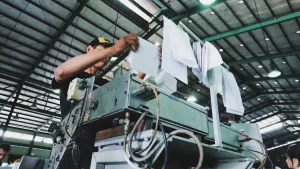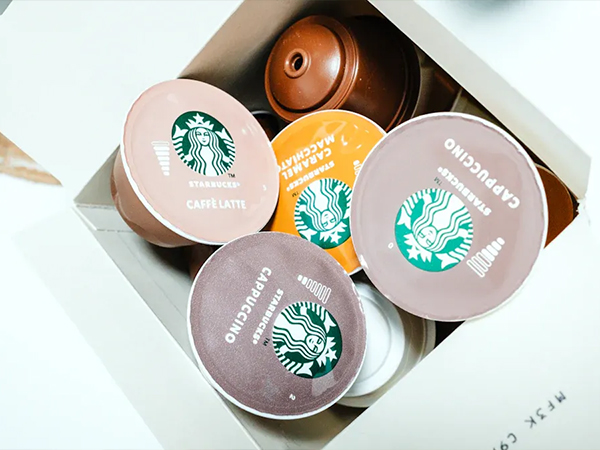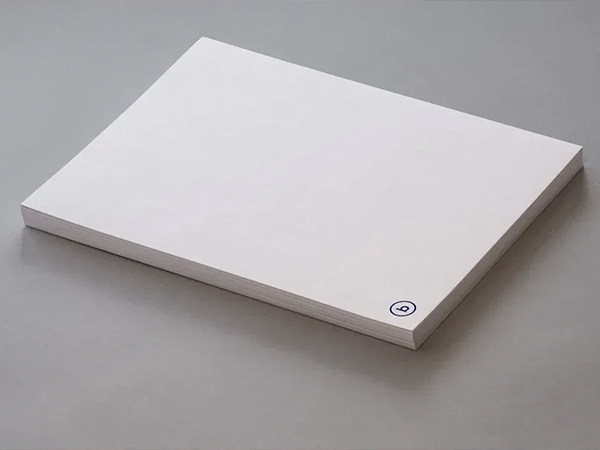
When you select a sizing method for papermaking, your choice directly affects both product quality and operational efficiency.
- Internal sizing, added before sheet formation, gives your paper uniform water resistance, mechanical strength, and better print quality by stopping ink feathering.
- Surface sizing, applied after sheet formation, lets you fine-tune surface smoothness and printability, while supporting rapid production changes and sustainability goals with biodegradable agents.
- Many producers now combine both methods to balance durability with superior surface characteristics.
Key Takeaways
- Internal sizing adds agents to pulp before sheet formation, giving paper uniform water resistance and strength throughout.
- Surface sizing applies a protective film after sheet formation, improving surface smoothness, printability, and flexibility.
- Combining internal and surface sizing balances durability with customizable surface qualities for diverse paper products.
- Choosing the right sizing method improves print quality by controlling ink absorption and preventing ink feathering.
- Surface sizing often lowers production costs by using renewable starches and enabling higher filler use.
- Eco-friendly sizing agents like starch-based and biodegradable options support sustainability and regulatory compliance.
- Proper sizing enhances paper strength, water resistance, and print performance, meeting customer demands effectively.
- Careful control and testing of sizing processes help optimize paper quality, production efficiency, and market competitiveness.
Key Differences

At a Glance
You need to understand the core distinctions between internal sizing and surface sizing to make informed decisions in papermaking. The table below summarizes the main technical differences:
| Sizing Type | Application Timing | Penetration into Paper | Effect on Paper Properties | Common Agents/Methods | Typical Uses |
|---|---|---|---|---|---|
|
Internal Sizing |
Added to pulp (wet-end) |
Penetrates fibers throughout |
Provides hydrophobicity from within; long-lasting moisture resistance; modifies fiber wettability |
Alkyl ketene dimers (AKD), alum rosin, wax rosins |
Packaging, writing, recycled papers |
|
Surface Sizing |
Applied after sheet formation |
Forms film on paper surface |
Alters surface absorbency, printability, smoothness, and strength without deep penetration |
Size press, tub sizing, spray, gelatin, starch |
Printing, specialty, high-gloss papers |
Tip: Internal sizing modifies the fiber structure during the wet-end process, while surface sizing creates a protective layer on the paper surface after sheet formation. You can combine both methods to achieve optimal performance for demanding applications.
Main Benefits
You gain several immediate advantages by choosing the right sizing method for your production line:
- Internal sizing increases your paper’s resistance to liquid penetration, which helps maintain strength and print quality. You can control the degree of sizing and optimize the amount of agent needed, which improves cost-effectiveness and process efficiency. This method also reduces waste and enhances durability, especially in packaging and recycled grades.
- Surface sizing lets you fine-tune surface properties such as water resistance, ink absorption, and smoothness. You can customize the finish to meet specific customer needs, like glossy or high-absorbency papers. Surface sizing also boosts mechanical strength and reduces porosity, which prevents excessive ink absorption and ensures sharp printing.
- You can apply surface sizing to individual sheets, allowing for rapid adjustments and product differentiation. This flexibility supports quick changes in production and helps you respond to market demands.
- Both methods support the use of eco-friendly agents, which aligns your operation with sustainability goals and regulatory requirements.
By understanding these differences and benefits, you can select the most effective sizing strategy for your paper products and production goals.
Sizing Basics
What Is Sizing
You encounter sizing every time you use paper that resists ink smudging or water damage. In papermaking, sizing refers to materials added to the pulp or applied to the surface of formed paper to control how the paper interacts with liquids. You can use agents like gelatin, rosin, glue, starch, or synthetic resins. These agents change the paper’s resistance to water and ink, making it more suitable for writing, printing, or packaging.
When you add sizing to the pulp before sheet formation, you create internal sizing. This method ensures that water resistance penetrates the entire sheet. If you apply sizing after the sheet forms and dries, you use surface sizing. This technique forms a protective film on the paper’s surface, improving durability and printability. The chemical nature of the sizing—acidic or alkaline—also affects the paper’s stability and longevity. For example, rosin-alum sizing, introduced in the 19th century, increased the durability of paper but also influenced its acidity.
Note: Sizing does not just protect paper from liquids. It also helps you achieve the right balance of strength, smoothness, and print quality for your specific application.
Why Sizing Matters
You rely on sizing to tailor paper properties for each end use. Without proper sizing, paper absorbs too much liquid, leading to weak sheets, blurred prints, and poor durability. Sizing allows you to control several key characteristics:
- Strength and Durability: Sizing reinforces fiber bonds, which increases tear and fold resistance. You reduce dusting and fiber loss, making your paper stronger for demanding uses.
- Printability: Sizing creates a smooth, even surface. You get sharper images, vibrant colors, and faster drying times because ink stays on the surface instead of soaking in.
- Water Resistance: Sizing forms a barrier that prevents water and other liquids from penetrating the sheet. This property is essential for packaging, labels, and specialty papers.
- Surface Finish: You can adjust absorbency and smoothness to meet the needs of art papers, glossy prints, or high-speed inkjet applications.
- Sustainability: Modern sizing agents often use biodegradable and renewable materials. You support recycling and reduce environmental impact by choosing the right agents.
- Cost and Performance Balance: Selecting the right sizing agent helps you balance performance, cost, and environmental goals. You ensure your paper meets customer demands while maintaining profitability.
Consistent sizing application is critical. If you control penetration and uniformity, you maintain high-quality paper that performs reliably in every use.
By understanding sizing, you gain the ability to produce paper that meets strict standards for strength, print quality, and sustainability. You set your products apart in a competitive market by mastering this essential step in papermaking.
Internal Sizing

Definition
You use internal sizing to modify the properties of paper during its formation. This process involves adding sizing agents directly to the pulp before the sheet forms. Internal sizing changes how fibers interact with water and other liquids. You achieve uniform water resistance throughout the sheet, not just on the surface. This method helps you produce paper that resists ink feathering and maintains strength when exposed to moisture. Internal sizing is essential for packaging, writing, and recycled papers where durability and print quality matter.
How It Works
You introduce sizing agents into the wet pulp mixture. These agents attach to cellulose fibers and create a hydrophobic barrier. This barrier prevents water and ink from penetrating deep into the paper. The chemical reaction between the sizing agent and the fiber occurs during the wet-end process. You control the amount and type of agent to achieve the desired level of resistance. After you form and dry the sheet, the sizing agent remains embedded within the fiber network. This approach ensures that every part of the paper benefits from enhanced water resistance and improved mechanical strength.
You gain consistent performance across the entire sheet because internal sizing works from within. This method allows you to tailor paper properties for specific end uses, such as packaging that must withstand humidity or writing paper that needs crisp print quality.
Common Agents
You select from several internal sizing agents based on your production needs and the pH conditions of your process. The most common agents include alkyl ketene dimer (AKD), alkenyl succinic anhydride (ASA), and rosin products. Each agent offers unique benefits and works best under specific conditions.
| Internal Sizing Agent | Chemical Nature & Form | pH Conditions | Key Characteristics & Usage |
|---|---|---|---|
|
Alkyl Ketene Dimer (AKD) |
Waxy solid, emulsified with cationic starch |
Neutral to weakly alkaline |
Less reactive than ASA, requires curing after drying, lowers paper friction, sensitive to hydrolysis during storage |
|
Alkenyl Succinic Anhydride (ASA) |
Oily liquid, emulsified before use |
Neutral to alkaline (pH 7.5-8.4) |
Highly reactive, forms ester bonds during drying, hydrolysis reduces efficiency, optimized with cationic starch |
|
Rosin Products |
Dispersion or micellar soap solution |
Acidic (pH 4-6) |
Requires mordant (alum), sensitive to hard water ions, intolerant of high temperatures, hydrolysis not a concern |
|
Copolymer Products |
Various copolymers |
Variable |
Less efficient than others, used at wet end, provides precise sizing gradations, long shelf life |
You often choose AKD or ASA for neutral and alkaline papermaking. Rosin sizing remains popular in mills using acidic processes. Copolymer products offer flexibility for specialty grades. You can also find dispersed rosin size and fluid rosin size for specific applications.
- Alkyl ketene dimer (AKD) size
- Alkenyl succinic anhydride (ASA) size
- Alkenyl ketene dimer (AnKD) size
- Dispersed rosin size
- Fluid rosin size
You improve paper quality and production efficiency by selecting the right internal sizing agent for your process.
Application
You apply internal sizing during the early stages of papermaking, specifically in the stock preparation phase. You add sizing agents such as acid- or alkaline-based rosin and alum directly into the wet pulp, also known as the furnish. This step takes place before the pulp reaches the forming wire of the papermaking machine. By introducing the sizing agents at this stage, you ensure that each fiber receives a protective coating. This coating hinders water penetration and improves the dimensional stability of the finished paper.
When you add sizing agents during refining, the process is sometimes called beater sizing. This method allows you to control the degree of internal sizing based on the type of paper you want to produce and its intended use. For example, you might increase the amount of sizing for packaging papers that require higher moisture resistance. For writing or printing papers, you adjust the sizing to balance ink absorption and print quality.
You do not make the paper waterproof with internal sizing, but you do enhance its resistance to moisture and ink. This improvement helps you produce paper that performs well in a variety of applications, from packaging to high-quality writing sheets. The flexibility of internal sizing lets you tailor the paper’s properties to meet specific customer requirements.
Tip: You can fine-tune the amount and type of sizing agent to achieve the right balance between water resistance, printability, and production cost. This control gives you a competitive advantage in the market.
Surface Sizing
Definition
You apply surface sizing to paper after the sheet forms and partially dries. This process creates a thin, continuous film on the paper’s surface. Surface sizing does not penetrate the fibers deeply. Instead, it modifies the outermost layer of the sheet. You use this method to control how the paper interacts with liquids, especially inks and water. Surface sizing gives you the ability to adjust the paper’s printability, surface strength, and resistance to liquid penetration. You often rely on this technique when you need to meet specific customer requirements for gloss, smoothness, or ink holdout.
Surface sizing acts as a customizable shield for your paper, letting you fine-tune its performance for different end uses.
How It Works
You carry out surface sizing at the size press or by spraying the sizing solution onto the paper web. The process usually takes place after the paper leaves the wet end but before it enters the drying section. You pass the partially dried sheet through rollers that apply the sizing solution evenly across both sides. The solution forms a uniform film that bonds to the surface fibers. As the paper dries, the sizing agent sets and creates a barrier that controls liquid absorption and enhances surface properties.
You can adjust the concentration and composition of the sizing solution to achieve the desired effect. For example, you might increase the amount of sizing for papers that require higher water resistance. You can also add functional additives, such as optical brighteners or pigments, to the sizing solution. This flexibility allows you to produce a wide range of paper grades with different finishes and performance characteristics.
You gain precise control over the paper’s surface, which is essential for high-quality printing and specialty applications.
Common Agents
You have several options when selecting surface sizing agents. The most common agents include starches and styrene-maleic anhydride (SMA) copolymers. Starches remain the industry standard because they are cost-effective, renewable, and easy to modify for different applications. You can use both native and modified starches, depending on the level of performance you need. Starch-based sizing improves surface strength, reduces dusting, and enhances ink holdout.
Styrene-maleic anhydride (SMA) copolymers offer additional benefits. You use these synthetic agents when you need higher water resistance or improved printability. SMA copolymers form a strong, flexible film that adheres well to the paper surface. They also allow you to incorporate other functional additives, such as pigments or dyes, into the sizing layer.
Other agents, such as polyvinyl alcohol (PVOH), carboxymethyl cellulose (CMC), and gelatin, can also serve as surface sizing agents for specialty papers. You might choose these materials when you need unique properties, such as high gloss or enhanced inkjet performance.
| Surface Sizing Agent | Key Features | Typical Uses |
|---|---|---|
|
Starches |
Renewable, cost-effective, versatile |
General printing, packaging |
|
SMA Copolymers |
High water resistance, strong film |
High-quality printing, specialty |
|
Polyvinyl Alcohol (PVOH) |
Excellent film-forming, clarity |
Inkjet, photographic, specialty |
|
Gelatin, CMC |
Specialty effects, unique finishes |
Art papers, archival, premium grades |
By choosing the right surface sizing agent, you can tailor your paper’s surface to meet demanding performance and sustainability goals.
Application
You apply surface sizing to paper after the initial pressing and drying stages. This step takes place at the size press, which sits about two-thirds of the way through the drying section of the paper machine. You use this process to enhance the surface strength, water resistance, and printability of your paper. Surface sizing binds fibers and pigments to the sheet, giving you a product that meets demanding performance standards.
You follow a series of steps to ensure effective surface sizing:
- Select the right surface sizing agent based on your paper’s requirements. You might choose starch, SMA copolymers, or specialty agents for unique finishes.
- Dilute the sizing agent to the recommended concentration. This step ensures even coverage and prevents defects.
- Prepare the paper by making sure it is clean and trimmed. You want a smooth surface for optimal sizing.
- Apply the sizing agent using methods such as size press, spray, or curtain coating. The size press is most common. You pass the paper through a nip where rolls immerse it in the sizing solution.
- Control application parameters like paper speed, roll pressure, and sizing concentration. You monitor these factors to achieve uniformity and consistent results.
- Dry the paper after application. Removing moisture prevents defects and locks in the enhanced surface qualities.
- Test the paper properties. You check for improvements in strength, smoothness, water resistance, and printability.
- Store and handle the finished paper carefully. You want to maintain the enhanced surface characteristics until delivery.
Surface sizing agents can be applied using film, pond, or spray techniques. You often use starch solutions at the size press for general printing and packaging grades. This process improves hydrophobation, printability, and convertibility. You reduce the need for internal sizing and boost machine runnability.
You benefit from the flexibility of surface sizing. You can adjust the concentration and composition of the sizing solution to meet specific customer needs. You might add optical brighteners or pigments for specialty papers. You can also tailor the finish for high-gloss, inkjet, or archival grades.
Surface sizing works well with a wide range of paper grades. You maintain performance over different pH levels, which helps you adapt to various production environments. You gain the ability to produce papers with consistent quality and enhanced surface properties.
Tip: Careful control of the sizing process lets you respond quickly to market demands and customize products for different applications. You improve your competitiveness by mastering surface sizing techniques.
Comparison
Mechanisms
You need to understand how internal sizing and surface sizing work at both chemical and physical levels. Each method changes the paper’s properties in a unique way. The following table summarizes the main differences in their mechanisms:
| Aspect | Internal Sizing | Surface Sizing |
|---|---|---|
|
Timing in Process |
Added to pulp furnish before paper formation |
Applied after paper web formation using a size press |
|
Chemical Mechanism |
Sizing agents (such as rosin, AKD, ASA) chemically bond or anchor to fiber surfaces, creating hydrophobic barriers throughout the sheet |
Starch or other materials physically coat and fill surface pores without chemical bonding or hydrophobicity |
|
Physical Mechanism |
Integrated into fiber matrix during sheet formation |
Physically fills capillaries and pores on paper surface, blocking water penetration |
|
Nature of Agents |
Hydrophobic, reactive molecules (for example, amphipathic AKD with hydrophobic tails oriented outward) |
Non-hydrophobic, typically starch-based, retention depends on electrostatic interactions |
|
Effect on Paper |
Creates water resistance throughout the sheet, influenced by pH and pulp type |
Modifies surface properties, can be adjusted for bulk or surface characteristics |
|
Additional Notes |
Chemical reactions involved; alkaline sizing offers advantages like longevity and compatibility with fillers |
Requires rewetting and additional drying energy; starch retention varies and affects recycling |
You gain full-sheet water resistance with internal sizing because the agents bond within the fiber network. Surface sizing, on the other hand, forms a protective layer on the outside, which you can adjust for different finishes and print qualities.
Chemicals
You select sizing agents based on the desired paper properties and the stage of application. The chemical nature of these agents determines how they interact with fibers and influence the final product. Here is a comparison of the key chemical differences:
| Feature | Internal Sizing Agents | Surface Sizing Agents |
|---|---|---|
|
Chemical Examples |
AKD, ASA, rosin, wax-based sizes |
Starch-based, wax-based, latex emulsion-based sizes |
|
Chemical Properties |
Hydrophobic, retained on fibers, uniform distribution, acidic (rosin) or neutral/basic (AKD, ASA) |
Form thin films with hydrophilic and hydrophobic ends, improve printability and water resistance |
|
Application Stage |
Wet end of papermaking |
Dry end, applied on dried paper surface |
|
Purpose |
Provide hydrophobicity and water holdout within paper matrix |
Enhance surface strength, printability, water and oil resistance |
You use hydrophobic and reactive chemicals for internal sizing. These agents bond with the fibers and create a barrier against water. For surface sizing, you rely on film-forming polymers like starch, which coat the paper and improve surface properties. You can also use latex emulsions or synthetic copolymers for specialty grades.
By choosing the right chemical, you control not only water resistance but also printability, surface strength, and recyclability.
Strength
You influence the strength of your paper by selecting the appropriate sizing method and application technique. Internal sizing improves fiber bonding from within, which increases the sheet’s resistance to tearing and folding. This method ensures that the entire sheet maintains its integrity, even when exposed to moisture.
Surface sizing, especially when applied with advanced technologies like OptiSizer or IntelliSizer, enhances surface strength and stiffness. For example, using a size press with higher nip loads allows starch to penetrate deeper, reducing fiber-to-fiber distance and boosting sheet strength. Curtain and spray applications provide precise control, leading to consistent strength and reduced downtime.
| Sizing Method | Effect on Paper Strength Properties |
|---|---|
|
OptiSizer Pond |
Through-sizing improves strength and surface properties, ideal for specialty and heavy printing papers. |
|
OptiSizer Hard |
Higher nip loads enhance starch penetration, increasing sheet strength. |
|
OptiSizer Curtain |
Curtain application increases stiffness and quality while saving energy and raw materials. |
|
OptiSizer Spray |
Precise spraying ensures consistent strength and less downtime. |
|
OptiSizer Combi |
Multiple methods optimize strength on both sides of the sheet. |
|
IntelliSizer |
Precise chemical application improves both strength and print qualities. |
- Internal sizing gives you uniform strength throughout the sheet, which is critical for packaging and writing papers.
- Surface sizing lets you target the outer layers, improving surface strength and stiffness for high-quality printing and specialty grades.
- You can combine both methods to achieve optimal strength and durability, especially for demanding applications.
You maximize paper performance by understanding how each sizing method affects strength. This knowledge helps you produce paper that meets customer expectations for both durability and print quality.
Printability
You need to consider printability as a top priority when producing paper for printing applications. Internal sizing and surface sizing both play critical roles, but they influence print quality in different ways.
Internal sizing controls how much ink the paper absorbs. You add sizing agents to the pulp, which helps regulate liquid absorption throughout the sheet. This process increases resistance to ink penetration and supports better ink absorption. You get improved print clarity because the ink does not spread uncontrollably. This benefit is especially important for processes like intaglio printing, where you want the ink to stay sharp and defined. However, too much internal sizing can sometimes cause prints to appear dull, especially in alternative photographic processes.
Surface sizing focuses on the outer layer of the paper. You apply it after the sheet forms, which lets you fine-tune surface properties. Surface sizing enhances smoothness, reduces porosity, and increases water resistance. You achieve a surface that holds ink on top, resulting in sharper images and higher contrast. This method also reduces surface fuzz, which helps maintain the mechanical stability of the paper during printing. You can customize the finish for different printing needs, such as glossy magazines or high-quality art prints.
- Internal sizing:
- Controls ink absorption by modifying the entire sheet.
- Improves print clarity by preventing ink from soaking in too deeply.
- Supports processes like intaglio printing.
- May cause dullness in some photographic prints if overused.
- Surface sizing:
- Enhances surface smoothness and reduces porosity.
- Keeps ink on the surface, increasing sharpness and contrast.
- Reduces surface fuzz and improves durability during printing.
- Can sometimes cause blotching in photographic prints due to chemical interactions.
You achieve the best printability by balancing internal and surface sizing. Internal sizing gives you control over ink absorption, while surface sizing lets you fine-tune the surface for sharp, vibrant prints. You should test different combinations to match your specific printing requirements.
Cost
You must consider cost when choosing between internal sizing and surface sizing. Each method affects your production expenses in different ways. Internal sizing often requires specialized chemicals like AKD, ASA, or rosin. These agents can be expensive, especially if you need high levels of water resistance or durability. You also need to factor in the cost of precise dosing systems and the impact on process efficiency.
Surface sizing, on the other hand, gives you more flexibility to control material costs. You can use starches, which are generally less expensive and renewable. By switching to low cationic starches in surface sizing, you can reduce starch consumption by about 30% without sacrificing surface strength. This approach allows you to replace some costly cellulose fiber with fillers, which further lowers your material costs. For example, a Scandinavian mill increased filler levels and reduced fresh filler usage by 5%, leading to significant annual savings. These changes show that surface sizing can help you cut overall costs compared to relying solely on internal sizing.
You also benefit from new surface sizing agents that reduce the need for internal sizing chemicals. When you use an AKD-modified surface sizing agent, you can decrease your reliance on internal sizing agents. This shift lowers your chemical costs and simplifies your supply chain.
Here is a quick comparison of cost factors:
| Cost Factor | Internal Sizing | Surface Sizing |
|---|---|---|
|
Chemical Cost |
Higher (AKD, ASA, rosin) |
Lower (starch, SMA, PVOH) |
|
Material Savings |
Limited |
Enables higher filler use, reduces fiber cost |
|
Process Efficiency |
May require precise dosing, more waste |
Easier adjustments, less chemical waste |
|
Flexibility |
Less flexible, fixed at wet end |
Highly flexible, adjust at size press |
|
Impact on Total Cost |
Higher for high-performance papers |
Lower for many grades, especially printing |
Tip: You can optimize your production costs by increasing the use of surface sizing and reducing internal sizing agents. This strategy helps you maintain paper quality while improving your bottom line.
When you evaluate your sizing strategy, always consider the balance between performance and cost. Surface sizing offers you a practical way to reduce expenses, especially for printing and specialty papers. Internal sizing remains important for packaging and grades that need deep water resistance, but you can often achieve the best results by combining both methods and adjusting the ratio based on your product requirements.
Choosing a Method
Factors
When you choose a sizing method for your paper products, you need to consider several important factors. The type of paper you produce, the desired end-use, and the performance requirements all play a role in your decision. You should think about how much water resistance, strength, and printability your customers expect. The balance of sizing directly affects absorbency. If you use too little sizing, water soaks in quickly and weakens the paper. If you use too much, water sits on the surface, making it harder to control ink or paint. You must also consider the production process. Internal sizing is mixed into the fibers during papermaking, which gives the entire sheet water resistance and helps prevent it from falling apart when wet. Surface sizing, on the other hand, is a thin coating applied after sheet formation. This slows water absorption and allows for more control during printing or painting.
You should also evaluate the degree and type of sizing needed for your specific application. Hard-sized papers are less absorbent and better for sharp details, while soft-sized papers absorb more and work well for wet washes. The choice of sizing affects how your paper handles different artistic techniques and quality levels. You must also account for variability between brands and paper grades, as sizing softness or hardness can differ and impact handling. Over time, sizing can deteriorate, so you need to consider the longevity of your product.
Tip: Always match your sizing method to the intended use and quality expectations of your customers.
When to Use Internal Sizing
You should use internal sizing when you need to modify the structural properties of your paper from the inside out. This method works best for papers that require high water resistance, stiffness, and dimensional stability. Internal sizing is ideal for packaging, writing, and high-quality cotton papers. By adding sizing agents early in the pulp formation stage, you ensure that the entire sheet gains uniform water resistance and strength. This approach helps your paper maintain its integrity even when exposed to moisture. If your customers need paper that resists ink feathering and stays strong when wet, internal sizing provides the best solution.
You also benefit from internal sizing when you want to control the absorbency and permeability of your paper. This method allows you to produce hard-sized papers for sharp details or soft-sized papers for more absorbency, depending on your target market.
When to Use Surface Sizing
You should choose surface sizing when you want to enhance the surface properties of your paper after it has formed. Surface sizing improves surface strength, stress resistance, and ink penetration control. This method is especially useful for bond, writing, and cover papers where surface fiber sealing is important. You gain precise control over tactile qualities, printability, and resistance to soiling or abrasion. Surface sizing is also preferred when you need to selectively size certain areas, such as in artistic or specialty applications.
Surface sizing allows you to add functional properties like hydrophobicity, brightness, and grease resistance. You can strengthen your paper and improve its performance for printing and packaging. If you need additional dry strength beyond what internal sizing can provide, surface sizing offers a practical solution. You apply it after the sheet has dried, using starch solutions or other agents to create a hard, protective coating. This process lets you fine-tune the paper’s surface for specific customer needs.
Note: Surface sizing gives you flexibility to adjust surface characteristics without altering the paper’s internal structure.
Combining Both
You can achieve superior paper performance by combining internal and surface sizing in your production process. This dual approach lets you harness the strengths of both methods, giving you a competitive edge in quality and versatility.
When you add sizing agents directly to the pulp, you ensure that each fiber receives a uniform coating. This internal sizing step provides consistent water resistance throughout the entire sheet. You gain reliable control over ink or dye absorption, which is essential for applications that demand even print quality and durability. Internal sizing also streamlines your process, as it treats the whole batch at once and maintains uniformity across large production runs.
After forming and partially drying the sheet, you can apply surface sizing. This step creates a protective layer on the paper’s exterior. Surface sizing lets you fine-tune the paper’s surface properties, such as smoothness, gloss, and resistance to ink bleeding. You can customize the finish for specific customer needs, whether you produce high-gloss magazines, calligraphy papers, or specialty packaging. Surface sizing also enhances the tactile feel and appearance of your product, making it more attractive in the marketplace.
By combining both methods, you benefit from the uniformity and efficiency of internal sizing and the customizable, protective qualities of surface sizing.
You should consider this approach if you want to meet demanding performance standards or serve diverse markets. For example, packaging papers often require deep water resistance and surface strength. Printing papers may need both internal control of ink absorption and a smooth, printable surface. Specialty papers, such as those used for art or archival purposes, benefit from the flexibility to adjust both internal and external properties.
However, you must balance the process carefully. Surface sizing can take more time and, if overapplied, may alter the appearance or feel of your paper. You need to experiment with the ratio and application techniques to achieve the best results for your specific grades.
Here are some practical steps to help you combine both methods effectively:
- Start with internal sizing to establish baseline water resistance and fiber strength.
- Assess the end-use requirements for surface qualities like gloss, smoothness, or printability.
- Apply surface sizing in a controlled manner, adjusting concentration and application method as needed.
- Test your paper for both internal and surface performance, making adjustments based on customer feedback and production data.
Tip: Personal experimentation and close monitoring of your process will help you find the ideal balance between internal and surface sizing. This approach ensures your paper meets the highest standards for quality, durability, and appearance.
By mastering the combination of internal and surface sizing, you position your operation to deliver premium products that satisfy a wide range of customer needs.
Applications
Printing Papers
You rely on sizing to produce printing papers that deliver sharp, vibrant results. Both internal and surface sizing play essential roles in this process. Internal sizing, such as alum-rosin, prevents ink feathering and ensures that writing and printing papers maintain clarity. Surface sizing, using agents like vegetable starch or gelatin, strengthens the paper’s surface and reduces ink bleeding. You can combine both methods to achieve optimal print quality and durability.
- Internal sizing stops ink from spreading, which is crucial for writing papers and many printing grades.
- Surface sizing enhances the surface, making it smoother and more resistant to ink penetration.
- Lithographic papers benefit from internal sizing because it resists fountain solution absorption and maintains sheet integrity.
- Surface sizing increases surface strength and improves ink holdout, especially for high-speed presses.
- Both methods protect fibers and improve overall paper strength, reducing dusting and fiber loss during printing.
Tip: For premium print results, you should balance internal and surface sizing to match the demands of your printing process.
Packaging
You face unique challenges when producing packaging papers. The right sizing method helps you meet operational goals and deliver products that protect contents during shipping. Sizing choices influence moisture resistance, durability, and the appearance of your packaging. Selecting the correct approach improves efficiency and supports your sustainability targets.
- Choose the right packaging size to boost operational efficiency and cut costs.
- Avoid too many box sizes, which complicate processes and slow throughput.
- Limit box sizes to prevent inefficient shipping and excess air, which raises costs.
- Train packaging associates to select box sizes based on SKU dimensions and order complexity.
- Analyze order and shipment profiles to optimize box assortment.
- Balance the number of box sizes to minimize shipping air while managing procurement and storage.
- Use historical data to refine your packaging strategy and avoid extremes.
- Right-sizing packaging reduces waste, lowers costs, and aligns with sustainability goals.
Note: Sizing in packaging papers primarily affects operational and shipping efficiency rather than the intrinsic performance of the paper itself.
Specialty Papers
You produce specialty papers for demanding applications such as art, archival, or technical uses. Sizing allows you to tailor properties for each unique requirement. For example, watercolor papers need precise surface sizing to control absorbency and support vibrant washes. Archival papers benefit from internal sizing that ensures long-term stability and resistance to environmental factors. Technical papers, like those used in filtration or medical applications, require custom sizing blends for specific performance targets.
You can experiment with different sizing agents and application methods to create papers with unique textures, finishes, or functional properties. This flexibility helps you serve niche markets and deliver products that stand out for quality and innovation.
By mastering sizing techniques, you expand your product range and meet the evolving needs of your customers across diverse industries.
Trends
Eco-Friendly Agents
You see a clear shift toward sustainability in the papermaking industry. Environmental awareness among consumers and manufacturers now drives the development and adoption of biodegradable sizing agents. You notice that starch-based sizing agents have become especially popular. These agents come from renewable sources and break down naturally, making them ideal for recycled paper production. You benefit from their cost-effectiveness and reliable performance.
You also observe that the use of recycled paper continues to rise. This trend increases the demand for eco-friendly sizing agents that work well with recycled fibers. Synthetic sizing agents have evolved, offering improved environmental profiles and tailored performance for specific paper grades. You can now choose from a range of options that balance efficiency with environmental responsibility.
You may find the following trends shaping your choices:
- Many mills now adopt bio-based and biodegradable sizing agents to meet regulatory requirements and reduce environmental impact.
- Starch-based sizing agents, derived from plants, offer both biodegradability and cost savings, making them a top choice for recycled and packaging papers.
- Nano-sizing technology and smart sizing agents have emerged, allowing you to enhance paper performance while reducing chemical consumption.
- Leading companies invest in research and development to create new bio-based alternatives and improve the efficiency of existing products.
- The Asia-Pacific region leads market growth, driven by rapid industrialization, government sustainability initiatives, and a large paper production base.
- Rosin sizing agents, although naturally derived, face increased scrutiny due to environmental concerns, prompting you to consider alternatives.
- Synthetic agents now feature more environmentally benign formulations, complementing the move toward greener papermaking.
Tip: You can strengthen your sustainability profile by choosing sizing agents that align with both regulatory standards and customer expectations for eco-friendly products.
Industry Practices
You operate in an industry that adapts quickly to new challenges and opportunities. Sustainability, regulatory compliance, and the demand for high-quality, sustainable packaging now shape your daily decisions. You see more mills integrating eco-friendly sizing agents into their processes. This shift not only meets environmental goals but also appeals to customers who value green products.
You notice that leading producers focus on:
- Increasing the use of starch-based and other biodegradable sizing agents.
- Investing in advanced sizing technologies, such as nano-sizing, to improve efficiency and reduce waste.
- Customizing sizing formulations for specialty papers and high-performance packaging.
- Collaborating with suppliers to develop innovative, sustainable solutions.
- Monitoring regulatory changes and adjusting practices to maintain compliance.
You also see a regional focus. The Asia-Pacific region stands out for its rapid adoption of sustainable practices, supported by government policies and a strong manufacturing base. You can learn from these leaders by staying informed about new technologies and market trends.
By embracing eco-friendly agents and modern industry practices, you position your operation for long-term success in a competitive and evolving market.
You now understand the key differences between internal and surface sizing. Internal sizing gives your paper deep, uniform water resistance. Surface sizing lets you fine-tune surface qualities for printability and strength. Evaluate your production goals and sustainability targets before choosing a method. Consult with your suppliers or run trials to optimize your sizing strategy.
For expert guidance or more resources, reach out to industry professionals or explore further learning opportunities.
FAQ
What is the main difference between internal sizing and surface sizing?
You add internal sizing to the pulp before sheet formation. You apply surface sizing after the sheet forms. Internal sizing changes fiber properties. Surface sizing modifies the paper’s outer layer.
Can you combine internal and surface sizing in one paper product?
You can combine both methods. This approach gives you deep water resistance and a customizable surface. Many producers use both to meet strict quality standards.
Which sizing method works best for recycled paper?
You should use internal sizing with agents like AKD or ASA for recycled paper. These agents improve water resistance and fiber bonding. Surface sizing with starch also boosts printability.
How does sizing affect print quality?
You control ink absorption with sizing. Internal sizing prevents ink from spreading. Surface sizing creates a smooth surface for sharp images. You achieve better print results by balancing both methods.
Are eco-friendly sizing agents available?
You can choose starch-based and biodegradable agents. These options support sustainability goals. Many mills now use eco-friendly sizing to meet environmental standards.
Does surface sizing increase production costs?
You often lower costs with surface sizing. Starch is less expensive than internal sizing chemicals. You also reduce fiber use by adding fillers. Surface sizing helps you optimize your budget.






